Oil on Panel
This exquisite, and important, stately portrait is a particularly splendid example of the sumptuous female portraits that were painted for members of the court and gentry during the early part of the 1600’s. Dress was a key component in portraits, and the exuberant attire and extravagance of jewellery in this painting reiterates the incredible wealth of this Jacobean woman. The pearl coronet on her head is in the style typically only worn by a Duchess of the realm, further signifying her elevated status..
The satin dress is decorated with myriad of fine white lace and embroidered with gold on the bodice and sleeves. The colour black, the most expensive colour of fabric to dye and to maintain, is juxtaposed against white. This striking combination was a favourite of Elizabeth I and courtiers in homage to the queen, just a few years earlier. There is an abundance of pearls, worn on both wrists, and as a heavy double rope around her neck and linked by a black rosette at her breast. Beneath her lavishly decorated dress is a petticoat called a wheel farthingale, an undergarment that flattened the abdomen and tilted the dress up at the back. The style was brought from Spain—possibly by Catherine of Aragon, first wife of Henry VIII—early in the 1500s and remained popular for over a century. The clothing and jewellery help to date this portrait to circa 1615. The lower waistline was fashionable just prior to 1625, as after this time, a more relaxed style with a higher waistline became popular.
The prominent white lawn and lace-edged ‘Elizabethan ruff’ sits above a vertical transparent fabric, perhaps a type of partlet, and through it can be seen the white lace on the bodice. This type of ruff was a great signifier of wealth; they often required up to fifteen metres of fabric and they grew in size and depth up to about the 1630s before a flatter style replaced them. Further indications of the fabulous wealth of this sitter, are the presence of elaborately decorated and exquisitely depicted Flemish lace wrist-ruffs and the huge square table-cut diamond on her finger.
In her left hand she carries a fan. Fans were commonly depicted in portraits of this period. The fan grew in popularity and importance into the eighteenth century when there became an entire ‘fan language’ – how they were held or gestured with, conveyed a message/s.
Clothing and jewellery were prized possessions and were often listed in inventories of estates and passed down from generation to generation.
Surviving for over four hundred years, this is a marvellous example of English portraiture from the close of the Elizabethan period. The seventeenth century carved and gilded auricular frame is a marvelous and rare work of art itself.
Stencils on verso: ‘917 GH’ and ‘426 GX’.
Robert Peake first worked for the minor nobility and landed gentry of the late Elizabethan period. In 1603 he was employed in the royal household of James I as ‘Picturemaker’ and four years later as ‘Sargeant Painter’ to James I, sharing the position with John de Critz. He is one of the best-known artists working in England during the reigns of Elizabeth I and James I.
Measurements: Height 104cm, Width 89cm, Depth 8cm framed (Height 41”, Width 35”, Depth 3.25” framed)





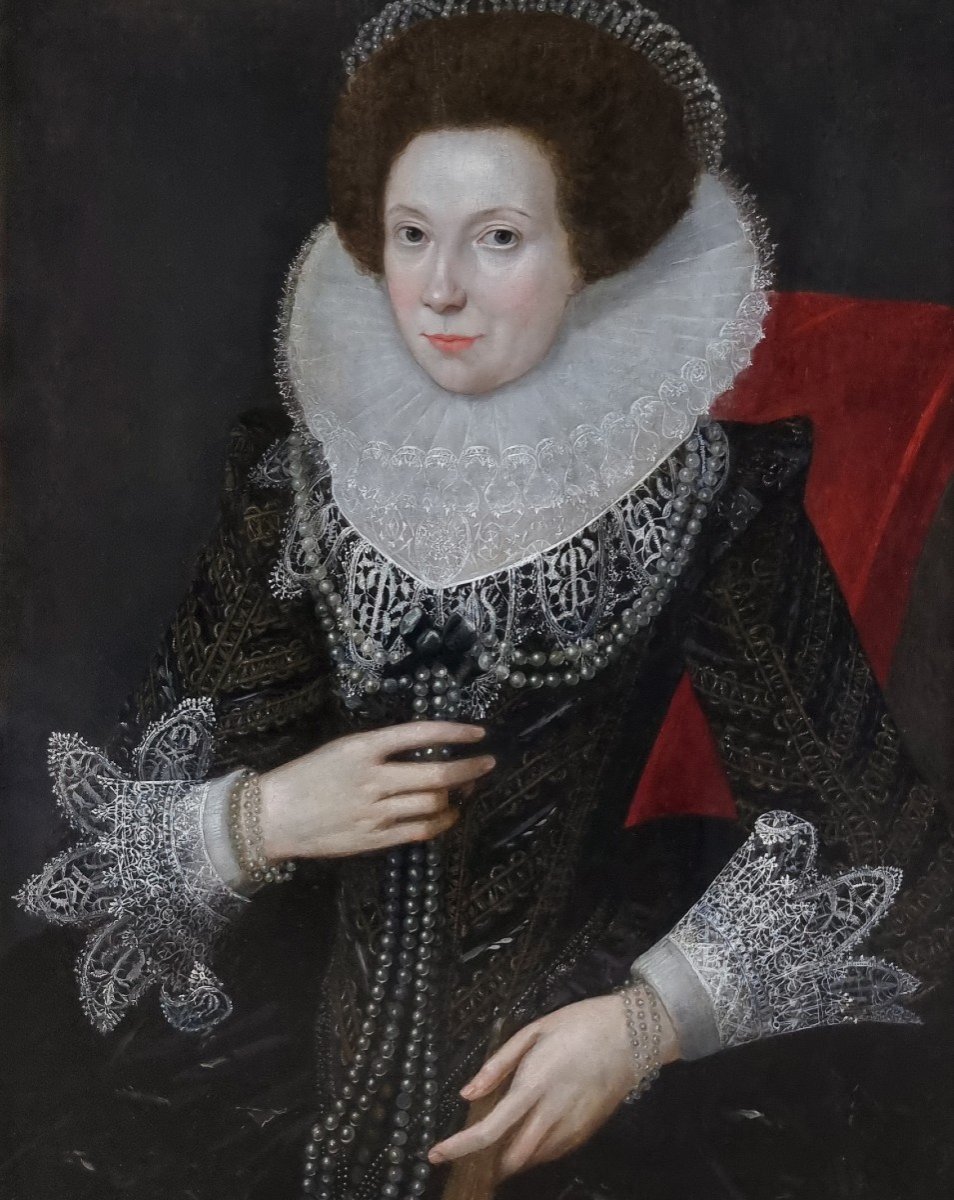

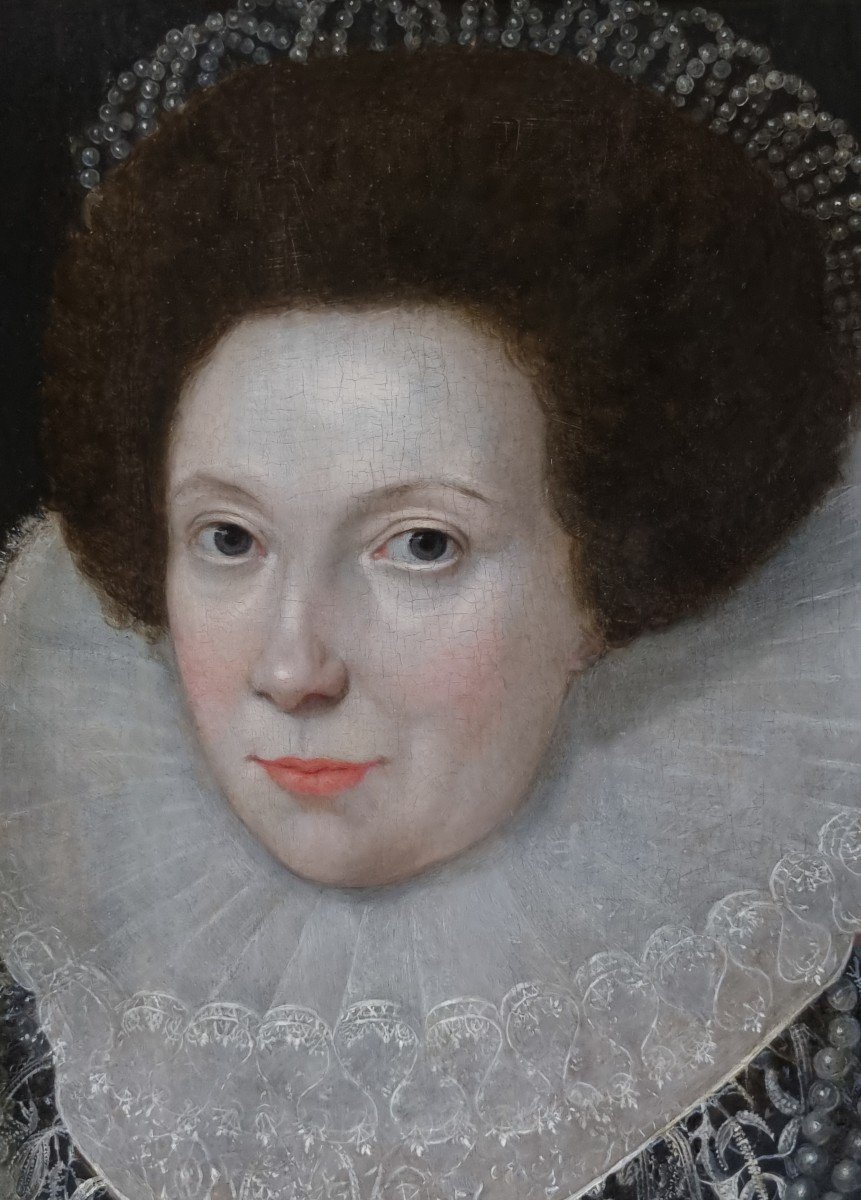
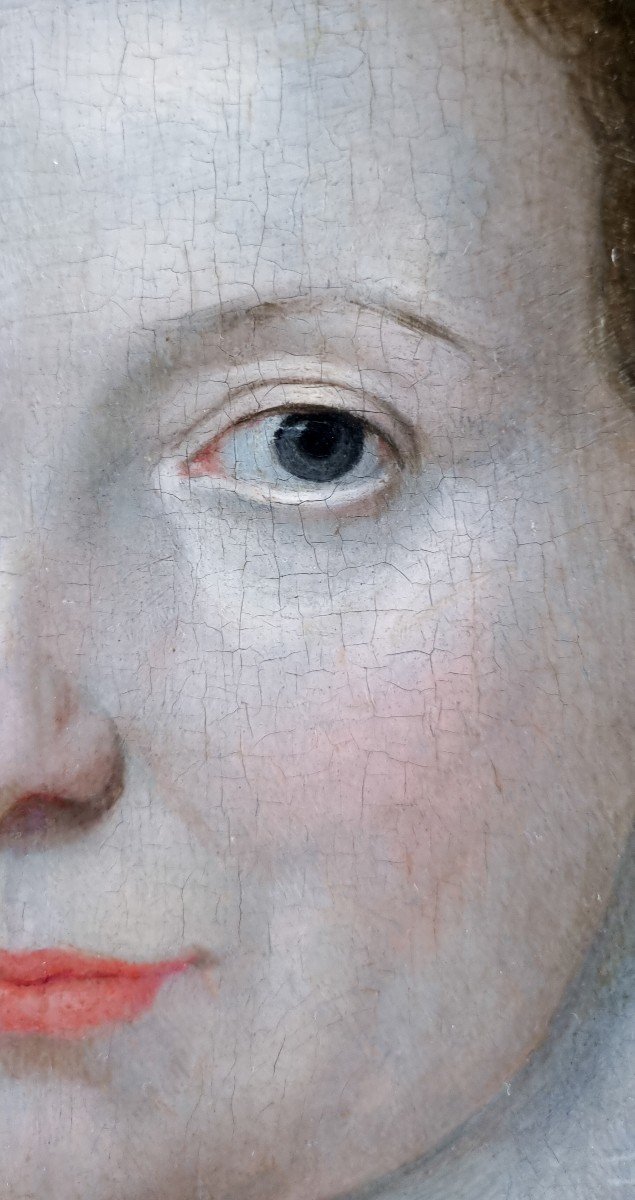

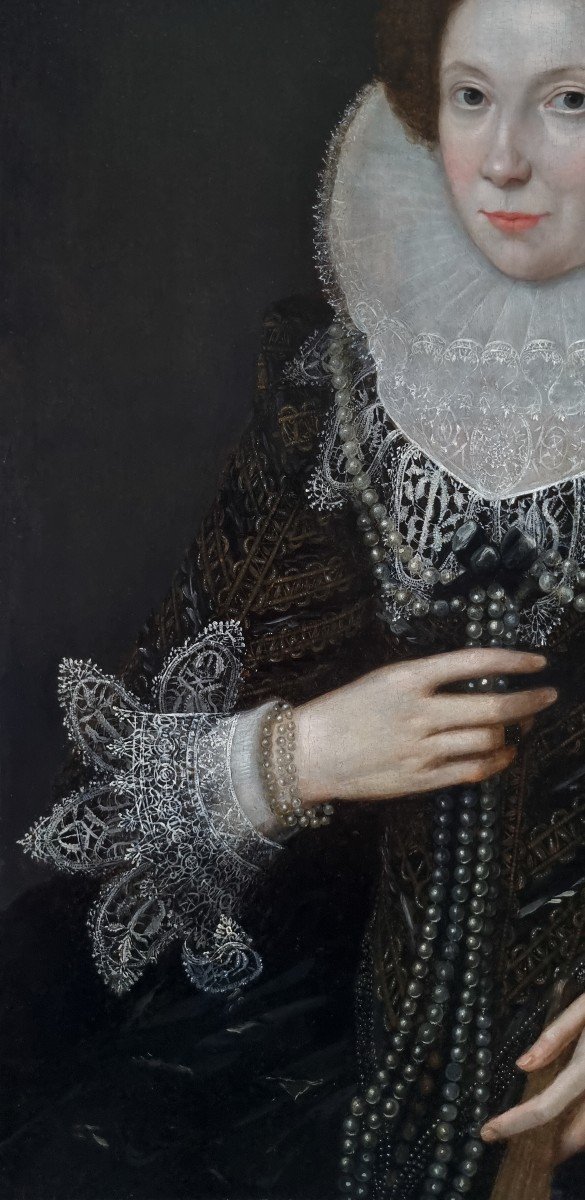
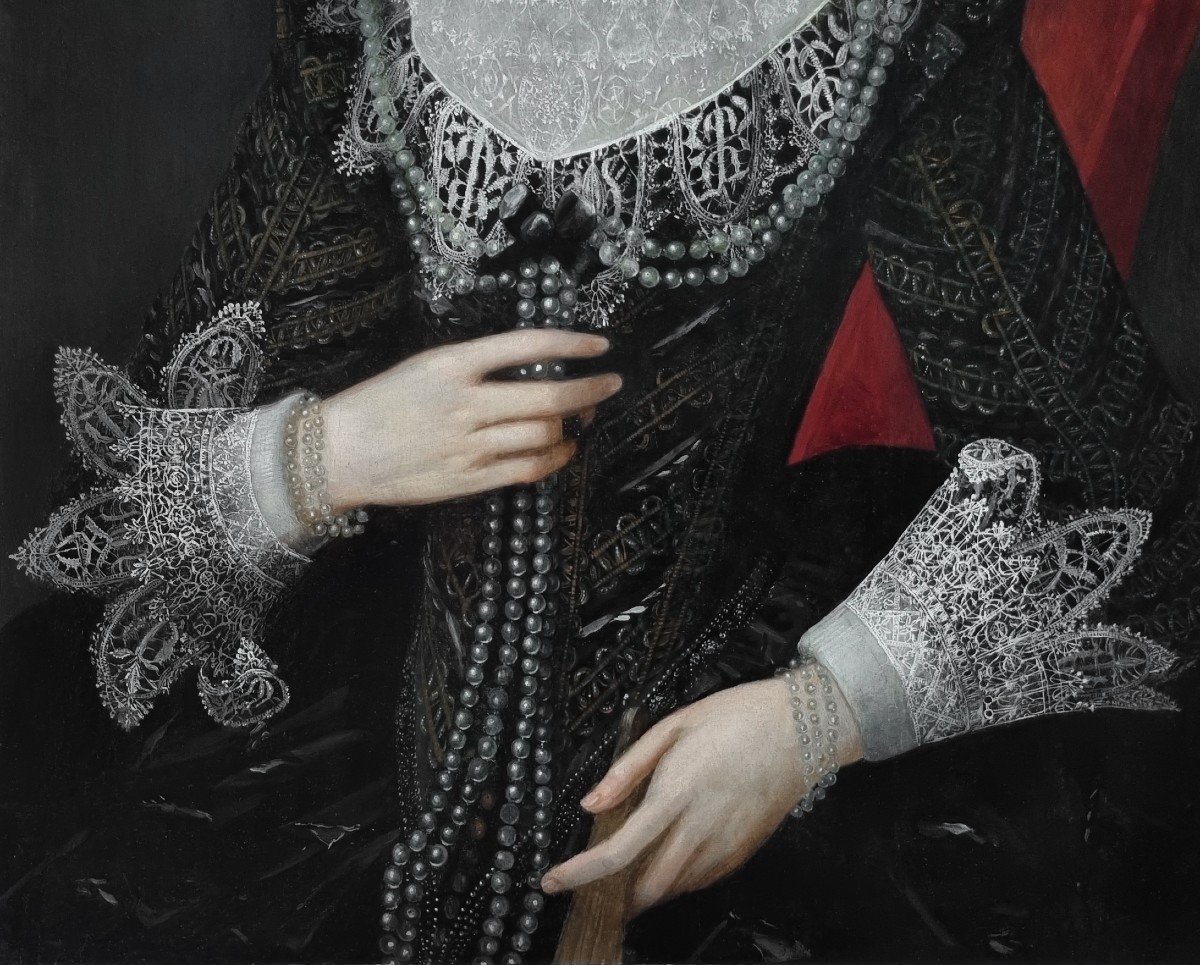
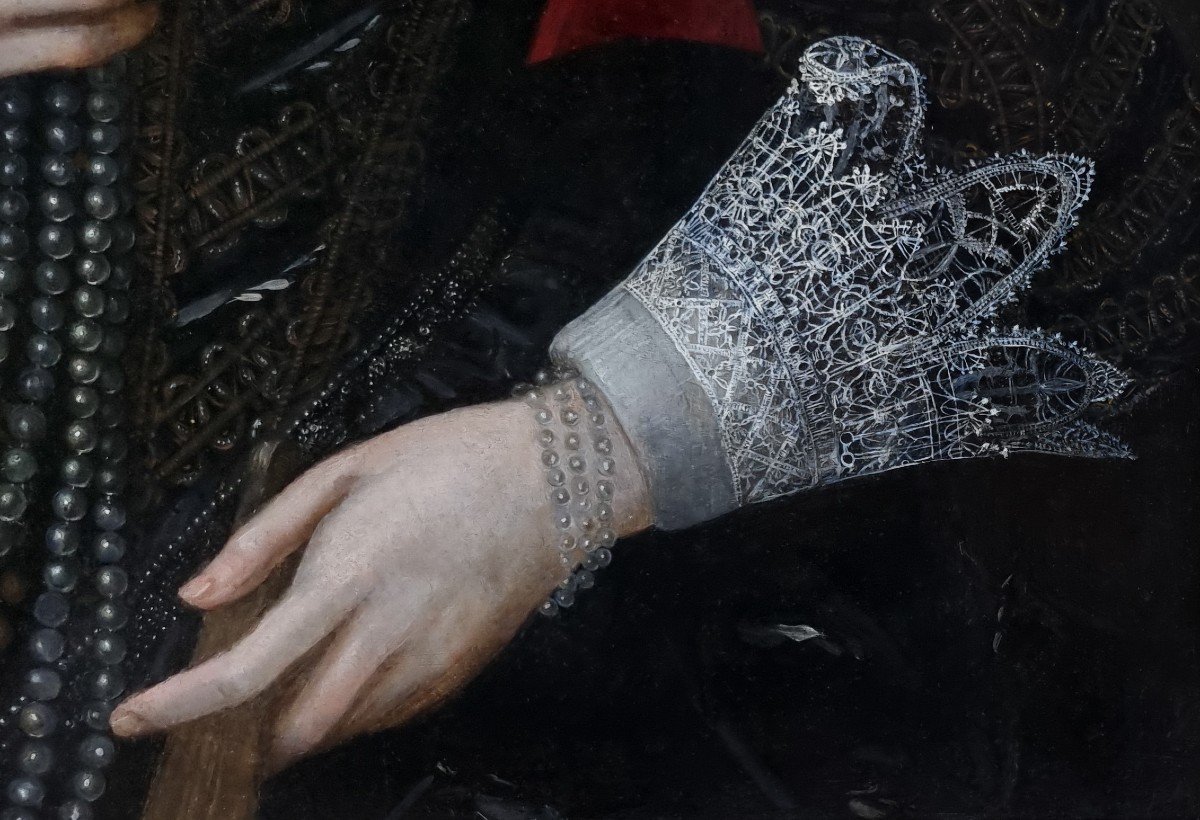






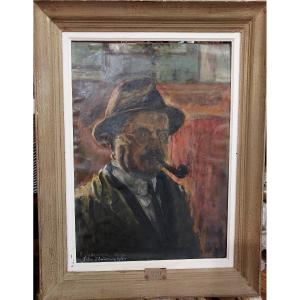
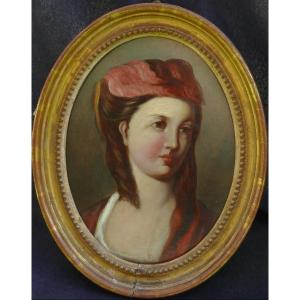


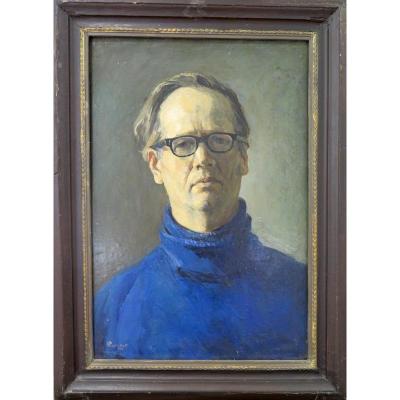
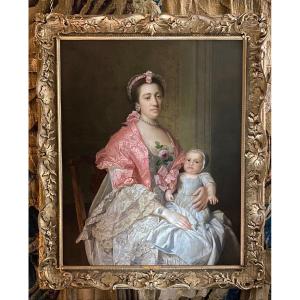



 Le Magazine de PROANTIC
Le Magazine de PROANTIC TRÉSORS Magazine
TRÉSORS Magazine Rivista Artiquariato
Rivista Artiquariato
